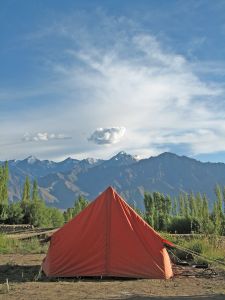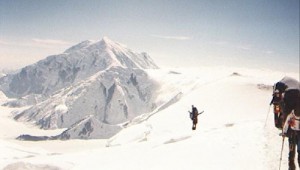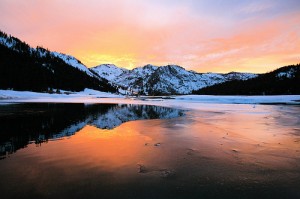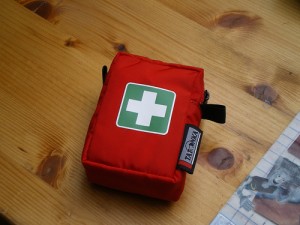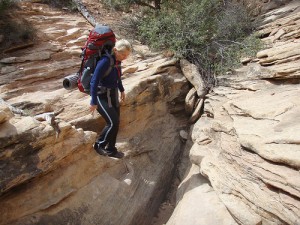Something about camping makes me hungry. All the fresh air and exercise means I wake up ravenous, and so do the kids. Small children are not patient. When they want food they want it now! If you are, or ever have been the parent of a young child you know that the sweet little cherub requesting breakfast one moment can turn into a screaming demon in a matter of seconds if their little tummies aren’t filled quickly. There is nothing more embarrassing than having the peacefulness of an early morning campsite shattered by the howling of a small being bent on convincing everyone in a 20 mile radius that his or her loving parents are starving him or her to death.
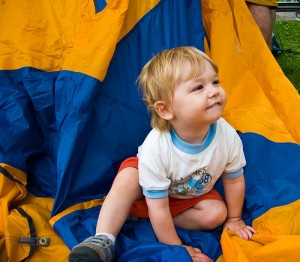
Make sure your kid is a happy camper! Photo by Jason Pratt
So how do you prevent the outbreak of World War III while the campfire is being lit and a nutritious breakfast is being prepared? Plan ahead. While everyone knows that the idyllic camping trip means cooking over a roaring fire it just is not always practical. First of all, if you try to cook over a roaring fire, everything is going to either burn or melt. This means that you have to build the fire and wait for it to die down. This takes time. Either you, the loving parent, will have to get up ahead of the kids (like that always happens), or you will have to lower your expectations until the kids are older and hopefully more patient. (LOL.)
There is a miraculous invention available to campers called a camp stove. Most camp stoves are lightweight and some are even foldable. They come in a range of prices and sizes. Some have one burner, and some have two. At this point, some of you diehard campers are cringing at the vary thought of propane cooking. Well, guess what? You don’t have to use the stove to cook your meals. You can wait for the fire. Use the camp stove to heat water for cocoa, or even oatmeal to stave off your little one’s starvation. Most camp stoves can heat water to boiling in around 5 minutes and obviously you won’t want the water THAT hot for junior’s chocolate fix. Instant oatmeal comes in a variety of flavors to soothe the savage beast until the real food is ready.
If for some reason you do not feel comfortable cooking on a camp stove for whatever reason, there are foods that you can prepare ahead of time.
Kids love frozen grapes. Just wash and separate several bunches of grapes before you leave home, and spread them on a cookie sheet. Place the cookie sheet in the freezer for a few hours until frozen then put them in a Ziploc bag. Keep the bag in the freezer until it is time to transfer to the ice chest. Other fruit such as apples, oranges and bananas don’t need to be frozen, just doled out.
Speaking of Ziploc bags, pour individual servings of a kid’s favorite cereal into a sandwich, or snack size bag. Believe it or not, it is okay for a child to eat cereal without milk. If you are afraid your child will become calcium deficient in the few days that you are camping, feed the kid some cheese! No really; milk will keep perfectly well in an ice chest for several days as long as the ice is replaced as needed. The point is, it is convenient to hand the child some cereal to munch on until the eggs are done. True, there are individual, snack-sized boxes of cereal available, but have you seen the cost of those things?
One final food item to prepare ahead of time is trail mix. Trail mix can be made of whatever you want it to be made from. Ingredients such as the ever popular cereal, nuts, pretzels, dried fruit or raisins and even a few chocolate chips or M&Ms. I’m going to go out on a limb here and suggest that you don’t usually give your child candy for breakfast. The novelty of this action just might make the camping trip more memorable for the kid, and give you the time to prepare a healthy breakfast.


